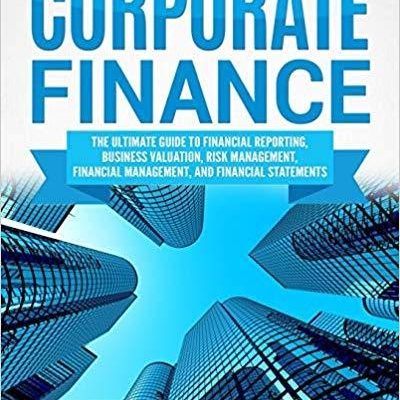Description
Corporate Finance is a handbook for business people wanting to learn the dynamics of finance along with its facets, such as financial reporting and conducting analysis, business valuation, risk management, financial management, and financial statements.
This book covers a wide range of finance topics and is written in a simple, understandable style. It also includes real-world examples where readers can pick applicable steps to practice good financial management. Learn the basics in preparing financial statements and analyzing business figures to interpret the financial health of the business entities being studied.
About the Author
Greg Shields is the director of the Auditing and Assurance Standards as Chartered Professional Accountants of Canada.
Table of Contents
The book presents the following topics:
Part 1: Financial Reporting
Introduction
Breaking down the basics
Summary of the four main financial documents
Internal vs. external financial reporting
How to assess a financial report as a whole
Footnotes: What they are and why they are important
How to create and analyze a financial report
What is included in the footnotes
What programs are there to help you create a financial report
Securities and Exchange Commission (SEC)
Quarterly and Annual Reports for Stockholder
Press Releases and Conference Calls; why are they important?
Conclusion
Part 2: Business Valuation
Introduction
Chapter 1 – Why you might need a business valuation
Chapter – The Basic Concepts behind Business Valuation
Chapter 3 – Profit based approaches
Chapter 4 Revenues based approaches
Chapter 5 – Asset-based approaches
Chapter 6 – Discounted cash flow
Chapter 7 – Sector-specific approaches
Chapter 8 – Valuing intangible assets
Chapter 9 – As art, not a science
Chapter 10 – What to look for in financial statements
Chapter 11 – Buying or selling
Conclusion
Part 3: Risk Management
Introduction
Chapter 1 – The Benefits of Risk Management
Chapter 2 – The Basic Concepts and Vocabulary of Risk Management
Chapter 3 – Enterprise Risk Management
Chapter 4 – Risk Management Models and the ‘The Greeks’
Chapter 5 – Credit Risk Management
Chapter 6 – Some aspects of market risk management
Chapter 7 – Operational risk management
Chapter 9 – Managing assets and portfolios
Chapter 10 – Losses and limits
Chapter 11 – Instruments for managing risk
Conclusion
Part 4: Financial Management
Introduction
Chapter 1 – What is financial management and why do you need it?
Chapter 2 – Financial statements
Chapter 3 – Looking at cash flow
Chapter 4 – Forecasting, budgeting, and flex
Chapter 5 – Capital spending and discounted cash flow analysis
Chapter 6 – Some aspects of treasury management
Chapter 7 – Managing your working capital
Chapter 8 – Hedging your bets
Chapter 9 – Management accounting
Chapter 10 – Ratios – Your management dashboard
Chapter 11 – A quick look at risk management
Conclusion
Part 5: Financial statements
Introduction
Chapter 1 – Accounts and Audit
Chapter 2 – The profits and loss account
Chapter 3 – The balance sheet
Chapter 4 – Sources and the use of funds
Chapter 5 – Notes to the accounts
Chapter 6 – Running the ratios
Chapter 7 – Putting it into practice – Sears
Chapter 8 – Putting it into practice – Airbus
Chapter 9 – Depreciation and amortization – A closer look
Chapter 10 – A few tips for the business owner or manager
Chapter 11 – Quality of earnings
Conclusion
Resources / Sources of Information – Financial Statements
Check out more books by Greg Shields
Resources / Sources of Information




